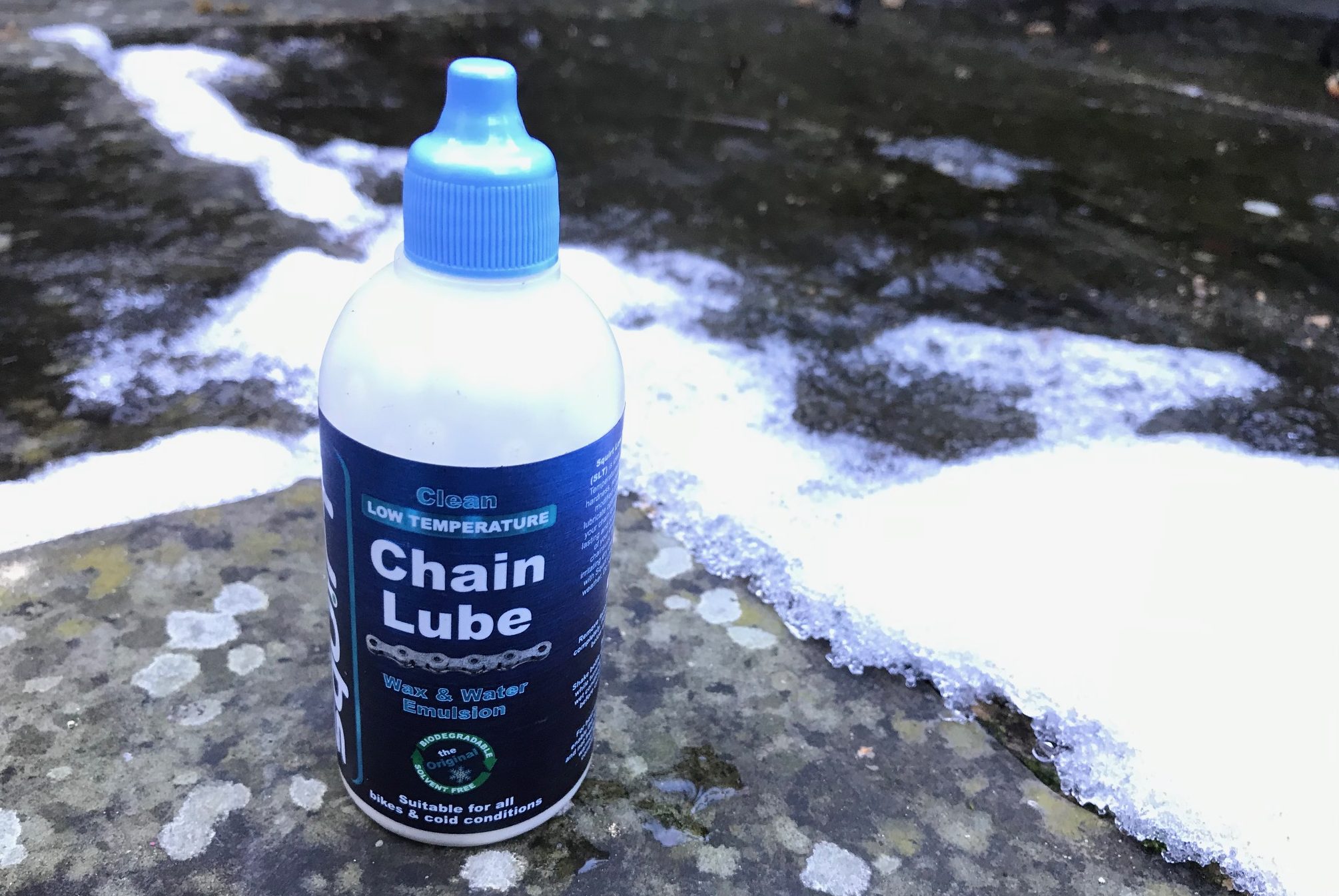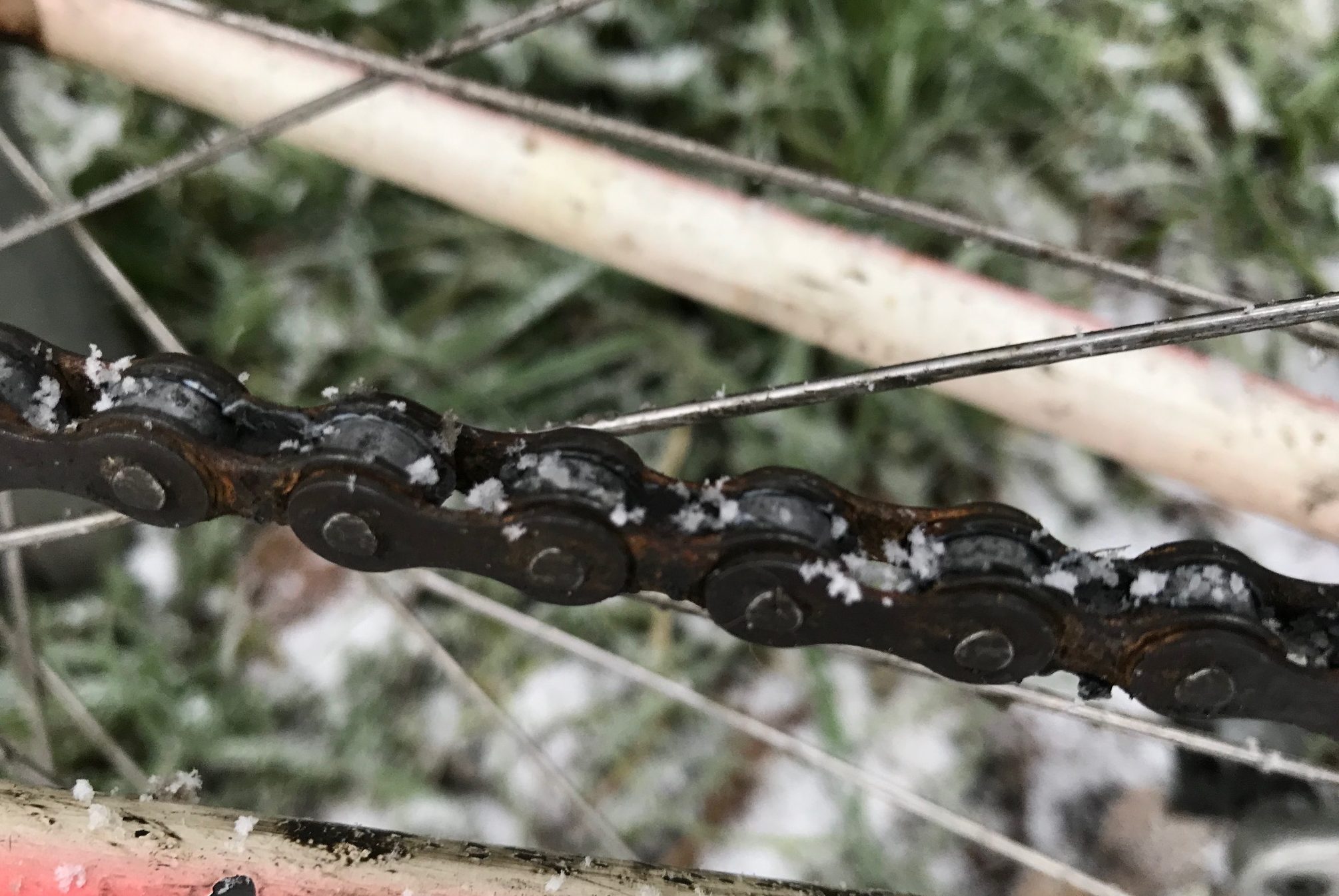Squirt Low Temperature Chain Lube review
This version of Squirt’s biodegradable wax lube is specially formulated for cold conditions – but has a few issues with wet ones

If you want your bike to be free of the black grime caused by wet 'oil' lubes and want to enjoy extremely smooth chain running for the first part of your ride at least, Squirt is perfect. But the fact that it washes off so easily and needs applying before every ride could put many people off. I would recommend it for summer use, but a more tenacious wet lube is better suited to winter.
-
+
Very smooth running
-
+
No build-up of oily black grime
-
+
100 per cent biodegradable
-
-
Washes off easily
-
-
Needs reapplication the night before every ride
-
-
Chain plates can rust
-
-
Expensive
You can trust Cycling Weekly.

Squirt Low Temperature Chain Lube is a 100 per cent biodegradable wax lube that its manufacturer says stays clean, is longlasting, and extends drivetrain life. We tested the regular ‘summer’ version last year and gave it 9/10. This winter version has a modified congealing point for cold conditions.
Following Squirt's instructions, it is possible to get your chain running silky smooth with no build-up of abrasive black paste. However, Squirt requires a much more rigorous chain care regime than a standard wet lube such as Finish Line; you end up using a lot more as a result, and it’s over twice the price.
Squirt Low Temperature Chain Lube: composition and application
Full marks for making Squirt 100 per cent biodegradable. It’s a wax and water emulsion that’s milky and very thin – only slightly thicker than actual milk – and contains no solvents.
This means, however, that its unique formula requires a completely degreased chain. Even a new chain needs the packing grease taking off it. If you don’t do this, Squirt simply won’t stay on.
>>> Is a waxed chain really worth it?
Squirt supplies detailed instructions for application. It’s tempting to ignore them, but they need to be followed to the letter if Squirt is to work properly. Sadly there’s no quick start guide, and that may put impatient people off.
For those people, I won’t go through the instructions here – let’s fast forward to applying it to a freshly degreased chain. Squirt has to be trickled via the bottle’s nozzle onto the inside of the chain. Because it’s so runny there is inevitably some wastage: a thin coating won’t do: the rollers have to be more or less swimming in it. It's a bit of a trick to make sure more goes into the chain than onto the floor.
Also because it’s so thin you can’t put it on just before you ride. It has to stiffen, a bit like candle wax. Ideally you do it the night before (Squirt says at least four hours, which obviously won’t work for the Sunday morning club run, unless you're up at around 4am). It stiffens better in cold conditions, so if you have a winter bike that lives in a shed rather than indoors, that's ideal.
The ride
If you’ve done everything properly and set off with a beautifully white, fully waxed, white-chocolate chain the ride will be as delicious as the chain looks like it should taste. If you overlube with wet lube, you can hear the links unsticking themselves from each other each time they go round the derailleur jockey wheels: not so with Squirt. Squirt is silent and smooth – and the more you’ve managed to get into the rollers the better it feels.
I can't comment on how many watts I'm saving in winter – waxed chains have been proven to improve drivetrain efficiency and are used by pro teams, but it I'm sure it won't cancel out the extra on my CdA from mudguards, gloves, overshoes and jacket.
I have to admit I've never felt my chain lube congealing at low temperatures, but I have ridden on the road at the lowest temperatures possible this year and the Squirt has felt smooth – at first. I've found that it washes off very easily and there's not a lot you can do about that in winter. The lanes are still always wet whether it's been raining or not. Although after a couple of hours the chain is not dry and squeaking – mainly because water is lubricating it – there's not much Squirt left by the time I get back, and reapplication is essential before the next ride.
I've also found that since it's water based, it doesn't protect the chain's plates from rust. I found this a little alarming at first and it's hard to see how this isn't going to affect it in the long term, but probably the chain would wear out – even with the increased life Squirt claims to give it – before the plates rust through. To be fair though, the rollers themselves stay nice and bright and clean.

Post-snowy ride ride the Squirt has washed off, exposing the rusting plates (but rollers stay clean)>>> Best chain lubes: buyer's guide
As for the chain's general cleanliness under winter riding conditions, naturally it still picks up grime – but that's all it is. My chain in the picture is the one I degreased back in October (it wasn't new then) and I've been using Squirt Low Temperature Chain Lube on it exclusively ever since. It looks bad, but the difference is it's not a thick, oily, abrasive grime that gets into every moving part of the drivetrain. In fact it's no worse than the mud on any other part of your bike after a winter ride. You could almost wipe it off with a sponge, rinse it under the tap and no one would be any the wiser.
Value
At £12.99 for 120ml it's almost twice the price of Finish Line Wet Lubricant and you'll get through a bottle a lot faster, too. Finish Line also makes Ceramic Wax Lube, which costs £8.49, £1 more than the Wet Lube. Muc Off Dry Lube costs £7.99 for 120ml. There is at least one lube that's more expensive and that's the Muc Off Hydrodynamic Chain Lube (developed with Team Sky, £15.99).

Thank you for reading 20 articles this month* Join now for unlimited access
Enjoy your first month for just £1 / $1 / €1
*Read 5 free articles per month without a subscription

Join now for unlimited access
Try first month for just £1 / $1 / €1
Get The Leadout Newsletter
The latest race content, interviews, features, reviews and expert buying guides, direct to your inbox!
Simon Smythe is a hugely experienced cycling tech writer, who has been writing for Cycling Weekly since 2003. Until recently he was our senior tech writer. In his cycling career Simon has mostly focused on time trialling with a national medal, a few open wins and his club's 30-mile record in his palmares. These days he spends most of his time testing road bikes, or on a tandem doing the school run with his younger son.
-
 What does Q36.5 mean? We asked the people behind the Italian kit brand that sponsors Tom Pidcock's team
What does Q36.5 mean? We asked the people behind the Italian kit brand that sponsors Tom Pidcock's teamQ36.5's Luigi Bergamo and Lodovico Pignatti Morano take on Cycling Weekly's Q&A
By Tom Thewlis Published
-
 'If I were a tennis player then my career would be over': Remco Evenepoel contemplated early retirement after serious training accident
'If I were a tennis player then my career would be over': Remco Evenepoel contemplated early retirement after serious training accidentDouble Olympic champion was left with nerve damage and says his shoulder is not yet fully healed ahead of his return to racing at Brabantse Pijl
By Tom Thewlis Published
-
 'It can really push me along' - How a velodrome comeback is making Caleb Ewan faster on the road
'It can really push me along' - How a velodrome comeback is making Caleb Ewan faster on the roadAustralian says he'll "definitely" continue track work after rekindling passion
By Tom Davidson Published